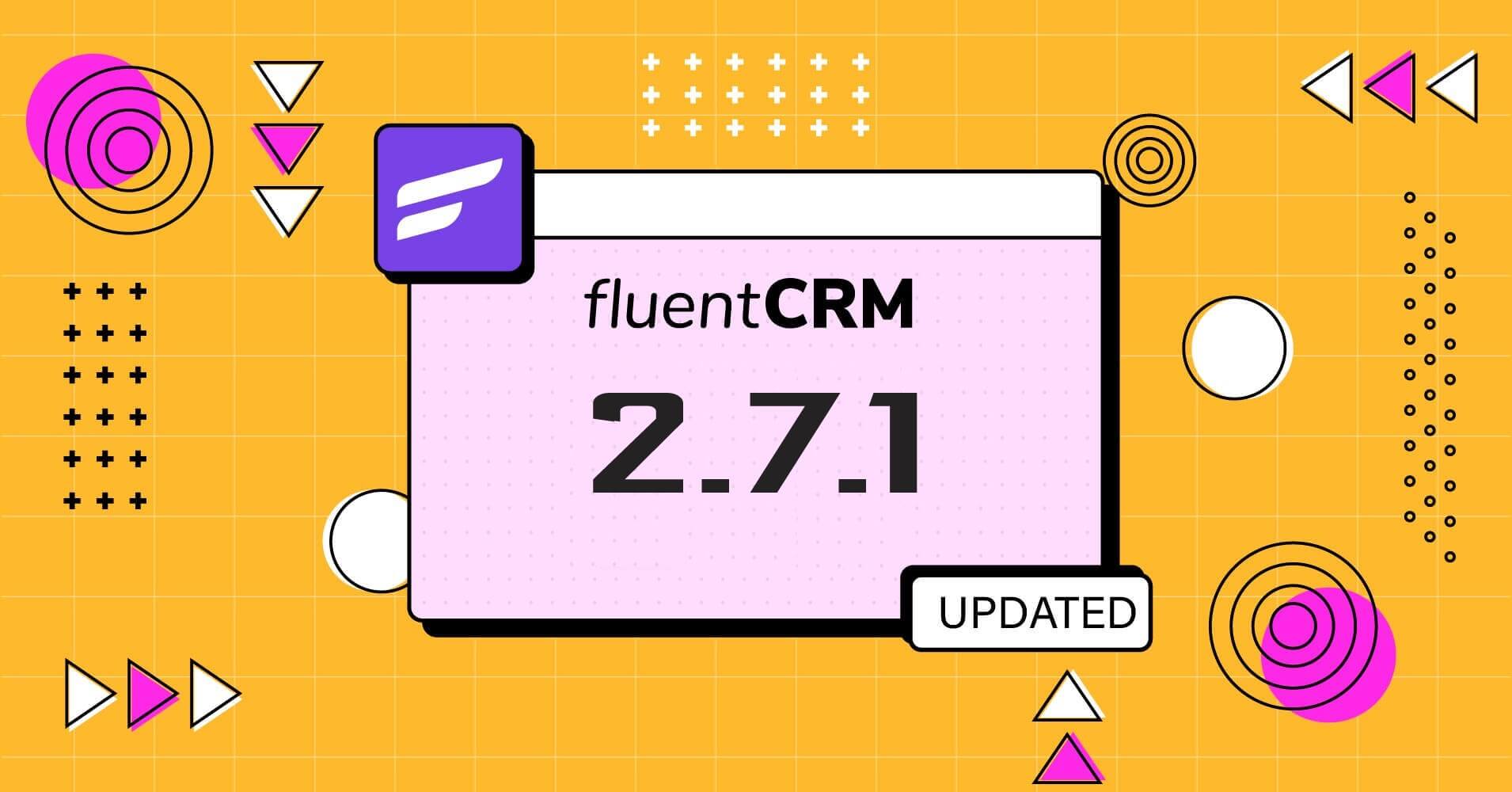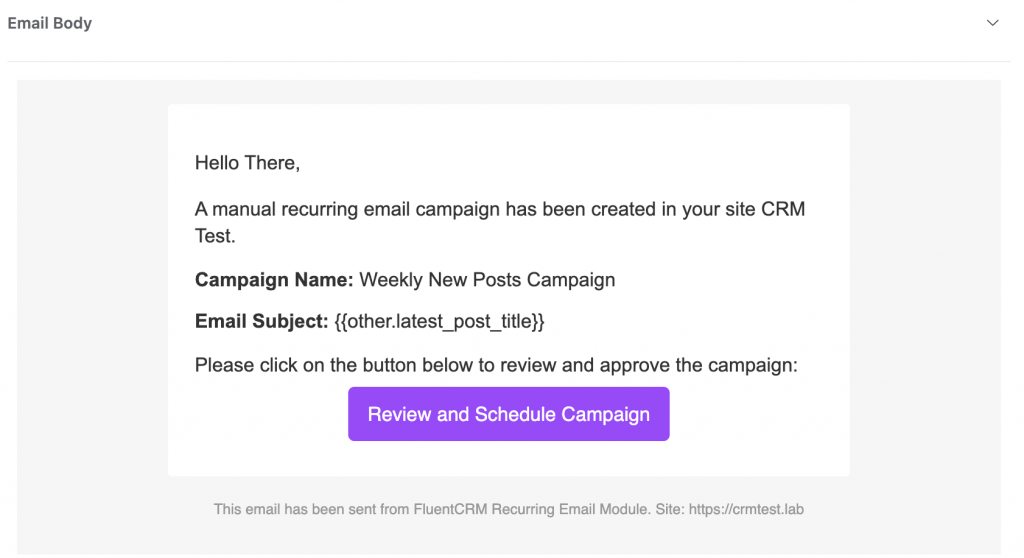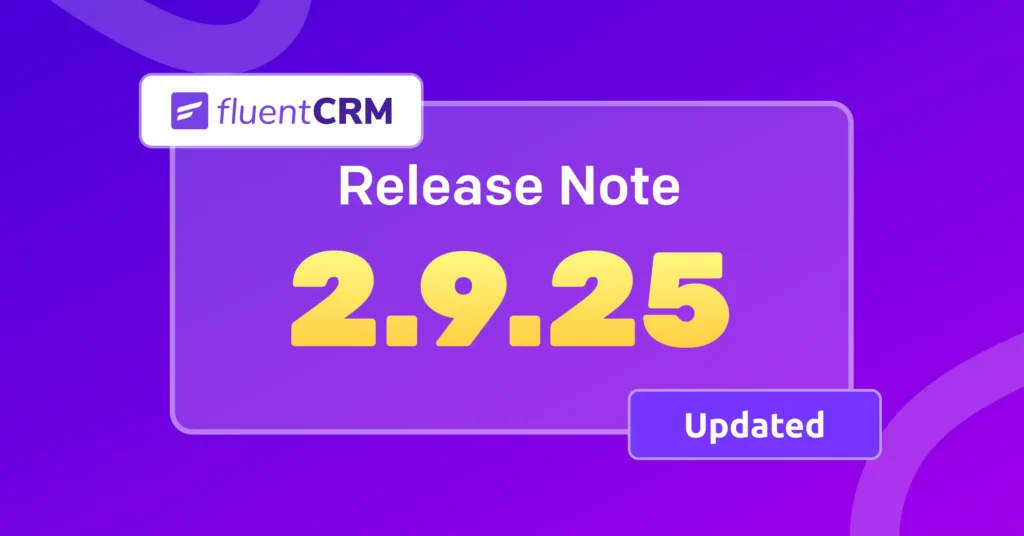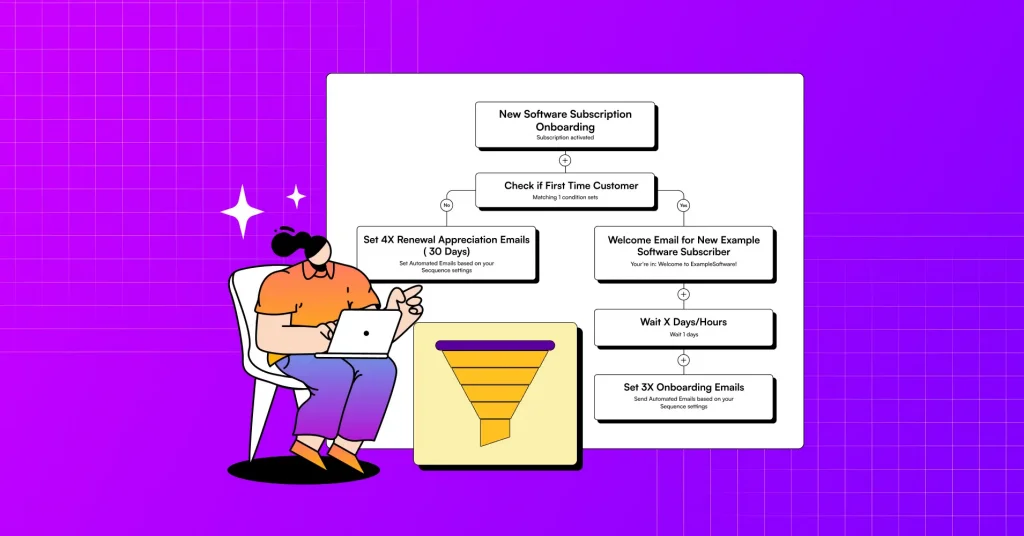
FluentCRM 2.7.1 Update – Improved Recurring Campaign & More smartcodes
Hello everyone, We just released another maintenance update of FluentCRM. This update comes with improvements to the newly released recurring campaign, more smart code for your dynamic data, and some under-the-hood improvements.
So let’s get to it without wasting any time!
Fixed: Recurring Campaign timezone issues
As you already know, we released a recurring campaign feature in our last update where you can easily send emails based on your recent post-publishing activity. It enabled you to send emails every week automatically or manually.
However, a drawback of setting up manual updates is that you wouldn’t know when the draft is ready for delivery. In this version, the system will email you when a new email is drafted in the background.

We also noticed some users faced issues with different timezone and we have fixed the issue in this version too.
Elastic Email bounce handler added
Bounce handling is crucial for your email delivery reputation and we understand that. This is why we have added bounce handling for tons of email service providers. Similarly, this version brings you a bounce-handling facility for Elastic Email. Now, you can set up Elastic email bounce handler in FluentCRM.

With this integration when an email address got bounced or a contact unsubscribed from ElasticEmail, FluentCRM will automatically change the status in your WordPress site’s contact status.
Please read the detailed tutorial here.
New Smartcode for latest post title and Custom Date Format
In this new version, we have added two new smartcode.
- {{other.latest_post.title}} : This smartcode will return the latest blog post title. It will be very useful for you to set the email subject from the latest published blog post.
- {{other.date_format.PHP_DATE_FORMAT}} : – If you want to show the current date dynamically with your own custom format then you can use this.
You can use any PHP-supported date format and replace the PHP_DATE_FORMAT part in the SmartCode.
Here are a few examples that you can take a look at:
format character | Description | Example returned values |
|---|---|---|
| Day | — | — |
d | Day of the month, 2 digits with leading zeros | 01 to 31 |
D | A textual representation of a day, three letters | Mon through Sun |
j | Day of the month without leading zeros | 1 to 31 |
l (lowercase ‘L’) | A full textual representation of the day of the week | Sunday through Saturday |
N | ISO 8601 numeric representation of the day of the week | 1 (for Monday) through 7 (for Sunday) |
S | English ordinal suffix for the day of the month, 2 characters | st, nd, rd or th. Works well with j |
w | Numeric representation of the day of the week | 0 (for Sunday) through 6 (for Saturday) |
z | The day of the year (starting from 0) | 0 through 365 |
| Week | — | — |
W | ISO 8601 week number of year, weeks starting on Monday | Example: 42 (the 42nd week in the year) |
| Month | — | — |
F | A full textual representation of a month, such as January or March | January through December |
m | Numeric representation of a month, with leading zeros | 01 through 12 |
M | A short textual representation of a month, three letters | Jan through Dec |
n | Numeric representation of a month, without leading zeros | 1 through 12 |
t | Number of days in the given month | 28 through 31 |
| Year | — | — |
L | Whether it’s a leap year | 1 if it is a leap year, 0 otherwise. |
o | ISO 8601 week-numbering year. This has the same value as Y, except that if the ISO week number (W) belongs to the previous or next year, that year is used instead. | Examples: 1999 or 2003 |
X | An expanded full numeric representation of a year, at least 4 digits, with - for years BCE, and + for years CE. | Examples: -0055, +0787, +1999, +10191 |
x | An expanded full numeric representation if requried, or a standard full numeral representation if possible (like Y). At least four digits. Years BCE are prefixed with a -. Years beyond (and including) 10000 are prefixed by a +. | Examples: -0055, 0787, 1999, +10191 |
Y | A full numeric representation of a year, at least 4 digits, with - for years BCE. | Examples: -0055, 0787, 1999, 2003, 10191 |
y | A two digit representation of a year | Examples: 99 or 03 |
For a full list please take a look here.
Wrapping up
Thank you for always being there for us. We trust that your support and our efforts will carry us far in the future. However, that is our side of the story, and we would love to hear from you as well. If you enjoy our efforts, please leave a review on the WordPress repository.
If you haven’t used FluentCRM yet, you can do so with the free edition. We’re confident you’ll enjoy what we have to offer.
Please take a look at this latest offer if you wish to upgrade to Pro.

-
Hi, please add the possibility of only showing posts from a specific tag/category (ideally also custom posts).
We would like to start using this feature but we have posts from different subjects and are not able to segment those posts into different recurring campaigns.






Leave a Reply